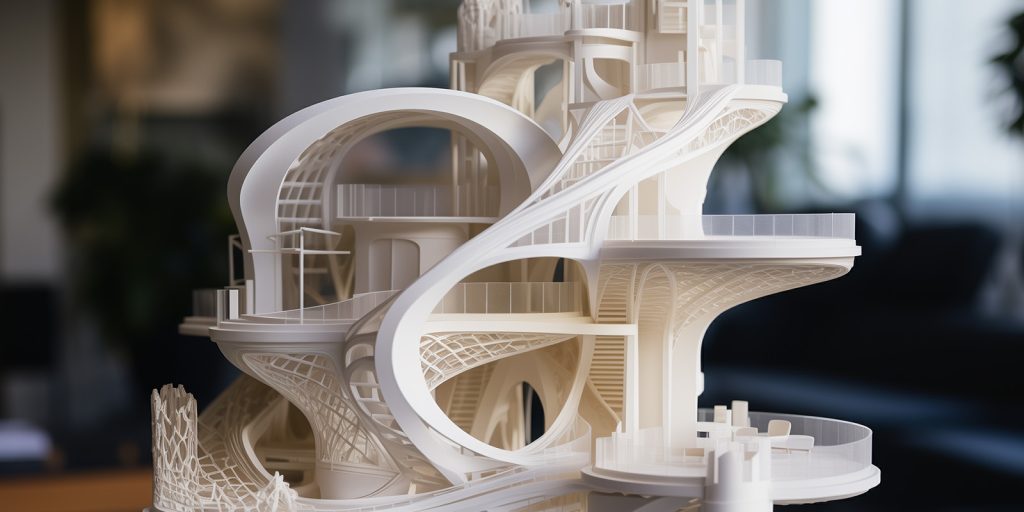Exploring the virtual space with Matterport: revolutionizing Interaction with Spaces

Discover how Matterport is transforming the perception of physical environments through interactive virtual tours. Explore advanced features and benefits in integration with Autodesk Construction Cloud. Virtual Tour with Matterport Matterport stands out as a pioneer in three-dimensional scanning technology and virtual tours, offering a cutting-edge platform that is redefining how we interact with physical environments in the digital age. Thanks to its ability to transform real spaces into engaging digital experiences, Matterport provides users with the opportunity to virtually explore a wide range of environments, from homes to museums, from construction sites to commercial spaces, ensuring an immersive and realistic experience. The power of Matterport lies in its advanced three-dimensional camera technology, which captures every single detail of an environment, allowing the creation of an interactive digital replica known as a “digital twin.” This replica offers users the ability to move freely within spaces, zoom in on specific details, and fully understand the layout of the environments Integrazione con Autodesk Construction Cloud: vantaggi nel contesto edilizio Moreover, Matterport integrates crucially with Autodesk Construction Cloud (ACC), becoming an essential tool in the construction context. This integration enables the generation of accurate three-dimensional models through environment scanning, providing a solid foundation for BIM design and reducing errors resulting from manual translation. Benefits of Matterport in construction project management There are several benefits of using Matterport in the construction context, such as: Comparison between BIM design and on-site execution: it facilitates comparison between BIM design and actual on-site construction, allowing for accurate “as-built” documentation through the export of three-dimensional models in various formats compatible with major design platforms. Real-time resolution of construction phase issues: enables better project management through the creation, assignment, and tracking of issues and requests for information (RFIs) directly from the Autodesk Build dashboard, improving collaboration among team members. 24/7 collaboration and reduction of time and costs: promotes remote communication and efficient collaboration among parties involved in construction projects, enabling informed decisions and timely project updates, resulting in time and cost savings. Labeling and scale measurement: offers the ability to automatically generate labels and real-scale measurements of all architectural and system elements, ensuring an accurate representation of spaces and components. In addition to these functionalities, Matterport offers marketing opportunities, allowing effective and detailed sharing and visualization of projects and construction sites with clients. Orbyta Engineering has successfully integrated the Matterport system into all phases of the design process, ensuring an innovative and comprehensive approach to project realization.
Milan’s Contemporary Architecture with Archimapping

Discover Milan through its extraordinary contemporary architecture with Archimapping, the app from Politecnico di Milano. Explore the city’s hundred most iconic buildings and immerse yourself in its rich cultural history. Discover Milan’s Contemporary Architecture with Archimapping Milan, a city of art, fashion, and design, unveils another of its treasures in the splendid panorama of contemporary architecture with the introduction of Archimapping, the innovative app developed by Politecnico di Milano with the contribution of the Milano Community Foundation and the collaboration of AIM (Association for Metropolitan Interests). This app offers an unprecedented journey through Milan’s architectural history, presenting the city’s hundred most iconic buildings that have shaped its face from the Unification of Italy to the present day. An open-air museum of Contemporary Architecture Launched with an exciting presentation at the historical library of Politecnico di Milano, Archimapping has been met with great interest from professionals, students, tourists, and citizens eager to deepen their knowledge of Milanese architecture. This tool aims to promote the culture and identity of the city, encouraging people’s sense of belonging and rootedness in the places they inhabit. Teatro dal Verme 1872 Cimitero Monumentale Exploring Milan’s Iconic Architectures One of Archimapping’s distinctive features is its ability to transform Milan into an open air museum of contemporary architecture. Available in both Italian and English, the app offers precise geolocation and suggestions for thematic itineraries, allowing users to explore the city according to criteria of personal interest, whether typological, geographical, authorial, or chronological. The selected buildings represent a wide variety of styles and historical periods, reflecting Milan’s social, economic, and cultural evolution throughout the 19th, 20th, and 21st centuries. Each work is meticulously documented through descriptive cards, historical iconographic materials, bibliographic references, and video contributions, offering users a comprehensive and engaging overview. Among the routes proposed by the app, ten thematic itineraries stand out, guiding visitors to discover architectures of work, culture, and leisure, the metropolitan area, sacred architecture, residence and collective housing, schools and universities, theaters, museums, and exhibition pavilions, among others. Archimapping presents a rich selection of buildings symbolizing Milan, from the oldest monuments such as the Monumental Cemetery by Carlo Maciachini and the Teatro Dal Verme, to more contemporary achievements such as the Vertical Forest by Boeri Studio and the Generali Tower by Zaha Hadid Architects. Works by the most famous architects are also included, such as the Velasca Tower by BBPR and the Pirelli Skyscraper by Gio Ponti. Furthermore, the app offers an insider’s view of Milan’s cultural institutions and universities, which have significantly contributed to the city’s architectural richness. Among these, stand out the Prada Foundation by OMA, the New Campus of Bocconi University by Sanaa, and the Campus of the University of Milano Bicocca by Gregotti Associati. Verical Forest Boeri Studio| Testa 2015 Velasca Tower 1950-58 | Samonà 1959 Archimapping represents a valuable tool for anyone wishing to explore Milan through its architecture, offering a unique and in-depth perspective on the city’s rich cultural heritage. Thanks to this app, every corner of Milan turns into a page of architectural history to discover and appreciate.
Digital Revolution and Architecture: innovative tools for architectural design

Has the digital revolution also touched the world of architecture and the way we design? The answer is certainly yes. Digital revolution and architecture: the approach to design has changed. Architecture is a discipline in constant evolution, and technological innovation has given rise to a series of tools that are transforming the approach to architectural design. These innovations have made architectural design more efficient, precise, fast, and environmentally friendly than ever before. In this article, we will see which tools professionals use to develop their architectural projects (and which they probably cannot do without anymore). BIM: the revolution of architectural design At the forefront, we certainly find BIM – Building Information Modeling. The widespread adoption of BIM represents a significant advancement in architectural design for several reasons: it enables detailed analysis before the project moves to the construction phase. These analyses can cover aspects such as sustainability, energy efficiency, structural safety, and other crucial factors for project success; it facilitates collaboration among different professionals, such as architects, engineers, and builders. Everyone can work on the same model, allowing for more direct communication and immediate sharing of changes, reducing the risk of errors, and improving project consistency; by identifying and resolving potential issues during the design phase, BIM helps reduce construction errors and the costs associated with ongoing changes. In summary, the use of this technology allows for time and resource savings, improving project management and reducing errors. 3D Printing: new frontiers for Architectural Design 3D printing is also redefining the approach to architectural design, through three keywords: innovation, sustainability, and customization. 3D printing enables the construction of realistic-scale prototypes, which help communicate the design and overall vision of the project more effectively. This technology facilitates the realization of complex shapes and structures that would be difficult or costly to produce with traditional methods. This gives architects the freedom to explore innovative and personalized designs, bringing unique architectural solutions to life. Another point in its favor is sustainability since, thanks to its precision, it reduces material waste by placing them only where necessary. VR and augmented reality: communication in architectural projects Virtual Reality (VR) and the Augmented Reality (AR) also represent a revolution in the architectural design process. There are mainly two reasons: Immersive visualization of projects – allowing industry professionals to explore virtual spaces and identify potential issues early on. Client involvement – presenting in VR engages clients more deeply, enhancing their understanding and speeding up the decision-making process. Overall, VR contributes to reducing design errors, saving time, and costs in the lifecycle of architectural projects. Technological innovations: transforming design phases The architecture of the future is digital, ecological, and connected. Embracing these innovative technologies can increase the efficiency of the design process, enabling the creation of more sustainable and intelligent buildings. At ORBYTA ENGINEERING, we have already integrated these and other tools into our workflow, achieving tangible results in terms of precision, efficiency, resource optimization, and sustainability. Check out our portfolio!
